WooCommerce vs Shopify: Which Platform Is Right for You?

The e-commerce industry brought in about $5.82 trillion in sales in 2023, and that number is only projected to increase as time goes on. So if you want to get in on the action, there could be some serious dollar signs in your future.
However, your e-commerce store will only be as successful as the platform you choose to sell with.
WooCommerce and Shopify are currently the most popular options, which means there’s lots of debates around which one is better. But how can you know which one is right for you?
In this article, we’ll break down the WooCommerce vs Shopify battle to help you decide which platform fits your needs.
What Is WooCommerce?
First things first, WooCommerce is free, but it’s only available as a WordPress plug-in, so if you’re using a different CMS, this platform won’t be an option for you. All you need is your own domain name and hosting account, then you can install WordPress and the WooCommerce plug-in. Once that’s done, you simply activate the plug-in and start building your store.
WooCommerce comes with some essential tools to get your online store set up—product pages, shopping carts, and payment portals. It also has some options for customizing the store’s theme.
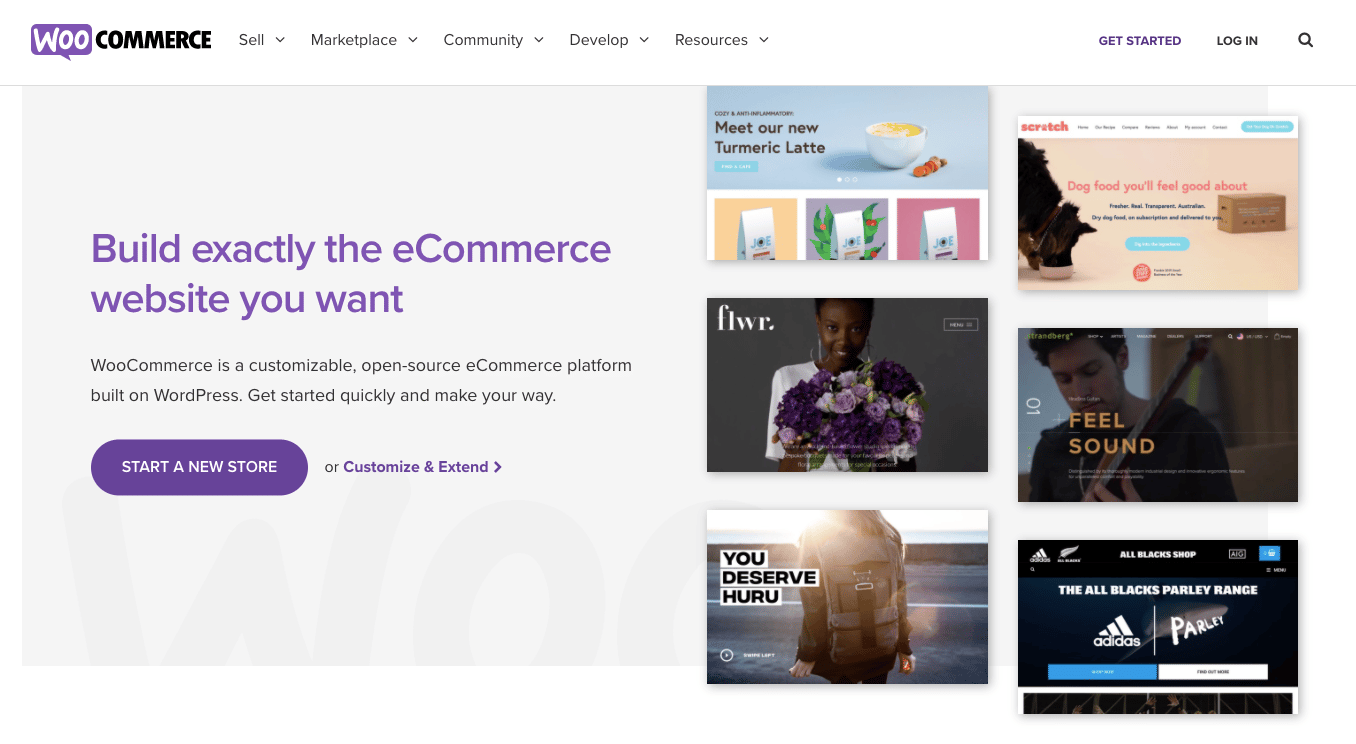
You can also go to the WordPress theme directory or other theme sites and choose a WooCommerce-friendly theme. This is important since WooCommerce will work best with a theme that was designed for it.
You may find that WooCommerce on its own does not give you everything that you want. In that case, you can add functionality with paid extensions. If you don’t have experience building websites, it’s best to hire a WordPress developer who is good with WooCommerce so you don’t run into issues.
What Is Shopify?
It isn’t free, but Shopify is easy to set up and is a great option for people who are looking for something quick and simple.
Shopify gives you convenience with various essential features built into the platform. It prides itself in being a one-stop solution for getting a fully functional store up and running quite quickly. You don’t need any website know-how to set it up.

Shopify provides hosting along with its website builder. Users simply sign up to get the tools and templates that they need to build a customized site. Shopify has over 100 themes, which is far less than WordPress, but they have enough customization options to make your site unique.
You have to work within the confines of the options available, however. You can’t touch the source code or add functionality that isn’t already available. You will likely find an app for what you need, though, if it isn’t already built in.
Shopify also offers easy integration with popular sites like social media channels and online marketplaces. This makes multi-channel marketing and selling easy.
The platform also provides customer support, so you can get help and guidance for any website issues you encounter. Shopify offers three different plans at different price points to help businesses make the most of their online store.
| Basic | Shopify | Advance |
| $25/month | $65/month | $399/month |
| Basic reports | Professional reports | Custom report builder |
| Up to 1,000 inventory locations | Up to 1,000 inventory locations | Up to 1,000 inventory locations |
| 2 staff accounts | 5 staff accounts | 15 staff accounts |
| Basic performance reports | Standard performance reports | Advanced performance reports |
| Fraud analysis | Fraud analysis | Fraud analysis |
| Abandoned cart recovery | Abandoned cart recovery | Abandoned cart recovery |
| Third party calculated shipping rates |
Learn in our ultimate guide How to Start a Shopify Store in Less Than 10 Minutes.
WooCommerce vs Shopify
WebsiteBuilderExpert conducted extensive research on over 50 platforms. They’ve pitched WooCommerce and Shopify against each other in the categories of ease of setup and use, design and themes, sales features, plugins and integrations, marketing tools, and SEO.
Bluehost has also got a ton of experience with WooCommerce vs Shopify sites and has lent their review of the basics, along with comparisons of security and transaction protection, ease of setup and use, payment gateways and fees, and pricing and services.
Here’s a quick view of the most important stats:
Now let’s get into more detail on some features of WooCommerce and Shopify.
Security and Transaction Protection
To be successful, an online business has to make sure that customer transactions are secure and that their personal data will not be used for anything other than that with which it was intended. SSL certificates are vital to the security of an ecommerce site. Adding this is one way to protect transactions.
On Shopify, various types of SSL certificates are included in the built-in suite of tools. With WooCommerce, users need to buy and install their own SSL certificate. Shopify also has Payment Card Industry Data Security Standard (PCI DSS) compliance built in.
WooCommerce users can also become compliant, but you need to take additional steps to get that working.
Ease of Setup and Use
Being a hosted platform, Shopify takes care of most of the technical aspects of building and operating an online store. This makes it a lot easier for the average store owner to use. You can easily set up your domain name and hosting, and get SSL protection. You also don’t have to take care of your software or site backups.
With WooCommerce on WordPress, you need to do all of this on your own or pay for a service to take care of it for you. It’s not really difficult. It just takes some time.
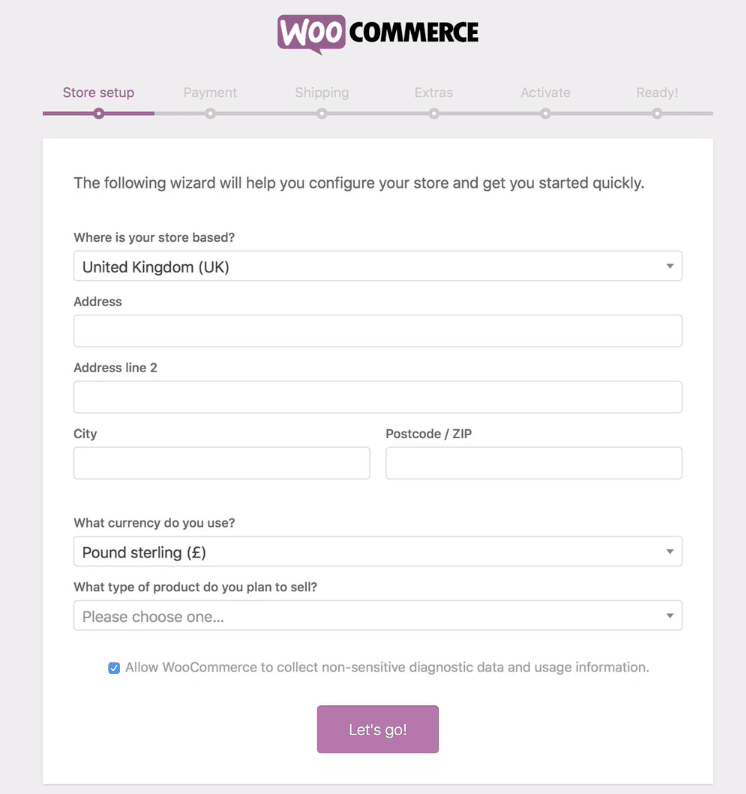
WooCommerce vs. Shopify in terms of tools is a close match. You can quickly set up a WordPress site along with the WooCommerce plug-in as long as you don’t run into any hosting or configuration issues. You also need to know what extensions you need, but the same goes for additional Shopify apps. Shopify does have more tools built in, so it’s a bit faster.
Shopify has full support throughout the process of building and running a store on their platform. WooCommerce does not provide access to customer support, but there’s a large user community and a multitude of tutorials and documentation. All you need is Google savvy and time.
If your goal is to have the creative control to build a truly unique site, WooCommerce is the winner.
Payment Gateways and Fees
WooCommerce and Shopify both offer multiple payment options from popular online payment gateways. WooCommerce users can add the payment gateways they want, like PayPal, using plug-in extensions.
Shopify offers them straight off, but some account plans will require transaction fees for each sale. These payments can be waived, however, if you use the new Payments feature.
Pricing and Services
Shopify users have to pay after an initial 14-day trial. This is enough to get the store and products set up. You can choose from several tiered plans, depending on the features and levels of service that you want or need. Plans start at $29 per month to over $200 per month.
| Basic | Shopify | Advance |
| $25/month | $65/month | $399/month |
| Basic reports | Professional reports | Custom report builder |
| Up to 1,000 inventory locations | Up to 1,000 inventory locations | Up to 1,000 inventory locations |
| 2 staff accounts | 5 staff accounts | 15 staff accounts |
| Basic performance reports | Standard performance reports | Advanced performance reports |
| Fraud analysis | Fraud analysis | Fraud analysis |
| Abandoned cart recovery | Abandoned cart recovery | Abandoned cart recovery |
| Third party calculated shipping rates |
The WooCommerce plug-in is free and so is WordPress, but a domain name, hosting, and an SSL certificate are not.
Depending on what you want your store to be able to do, you may also have to purchase plug-ins and WooCommerce extensions. The costs are therefore unpredictable unless you sit down and research what exactly you need to make your store run the way you envision. These costs can also go up or down as the prices of extensions and plug-ins change.
Design and Themes
WooCommerce and Shopify are again nearly tied when it comes to design options. They both have robust themes that you can customize to fit your branding.

Shopify’s 100+ themes are all created based on what sells. WordPress themes, although numbering in the tens of thousands, however, are not.
You can get a theme that was made for WooCommerce, and therefore for an e-commerce store, though. One site alone, ThemeForest, has more than 1,000 e-commerce themes.
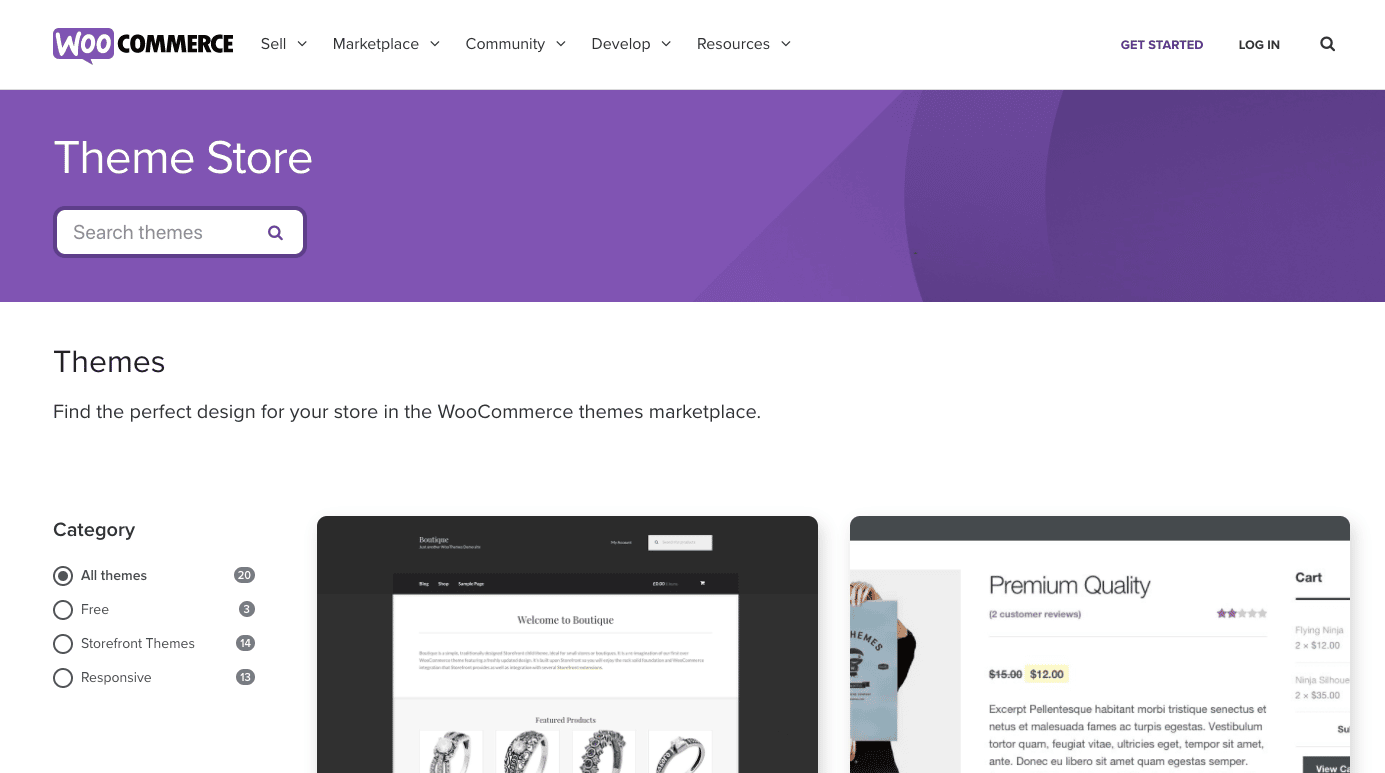
Shopify Premium themes cost upwards of $140, while the price of WordPress themes vary greatly. WordPress themes tend to be cheaper, however, unless you choose one that costs you monthly. You should also note here that you want a responsive theme so your site shows up nicely on mobile devices.
Your website’s design will be somewhat limited with Shopify, since it only has about 70 themes and 30 variations. With WooCommerce, there seems to be no limit, especially since new themes pop up all the time.
Sales and Marketing Features
Both Shopify and WooCommerce themes are designed to help you sell more, but Shopify’s themes are curated, i.e.,only the ones that work best are retained. And they also have some nifty features to boost sales.
Abandoned Cart Recovery
Shopify includes abandoned cart recovery out of the box. With WooCommerce, you need to set it up. This is an important feature because you can call customers back to their shopping carts if they did not check out when they added items to it.
Multichannel Selling
Integrating your store to sell on Amazon, eBay, and Instagram is free on Shopify.
A WooCommerce WordPress setup, on the other hand, will need a $79 payment to install the integrations.
Facebook is also free to install and is included in the Shopify integration.
Shipping
You can offer free shipping and sell internationally with both Shopify and WooCommerce. Shopify, however, has partnerships with USPS, DHL Express, UPS, and Canada Post.
If you aren’t using, say, Amazon fulfillment through multi-channel orders, this can save you a lot of time and effort looking for couriers to work with.
Email Marketing
Both WooCommerce and Shopify allow you to run multiple email campaigns through apps. This makes it easier to market your products.
Installing apps on Shopify or plug-ins on WordPress allows you to expand your store arsenal. You can add extra functionality to all areas on both platforms. This includes shipping, SEO, and marketing. Not all of these additional features are alike, however.
WooCommerce depends on plug-ins and extensions for increased functionality because it is an open-source platform. This means that you have access to over 50,000 of them. Shopify, on the other hand, has just over 1,200 free and paid apps.
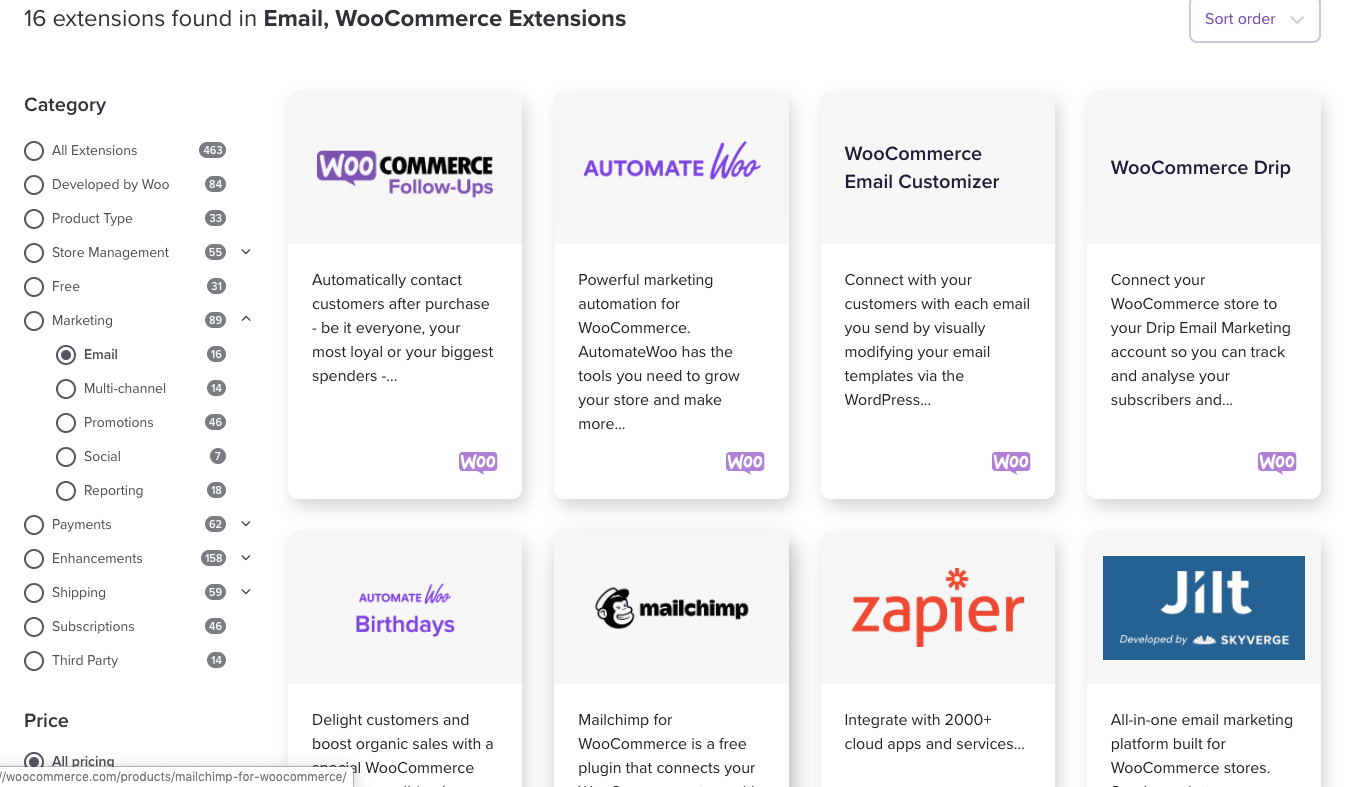
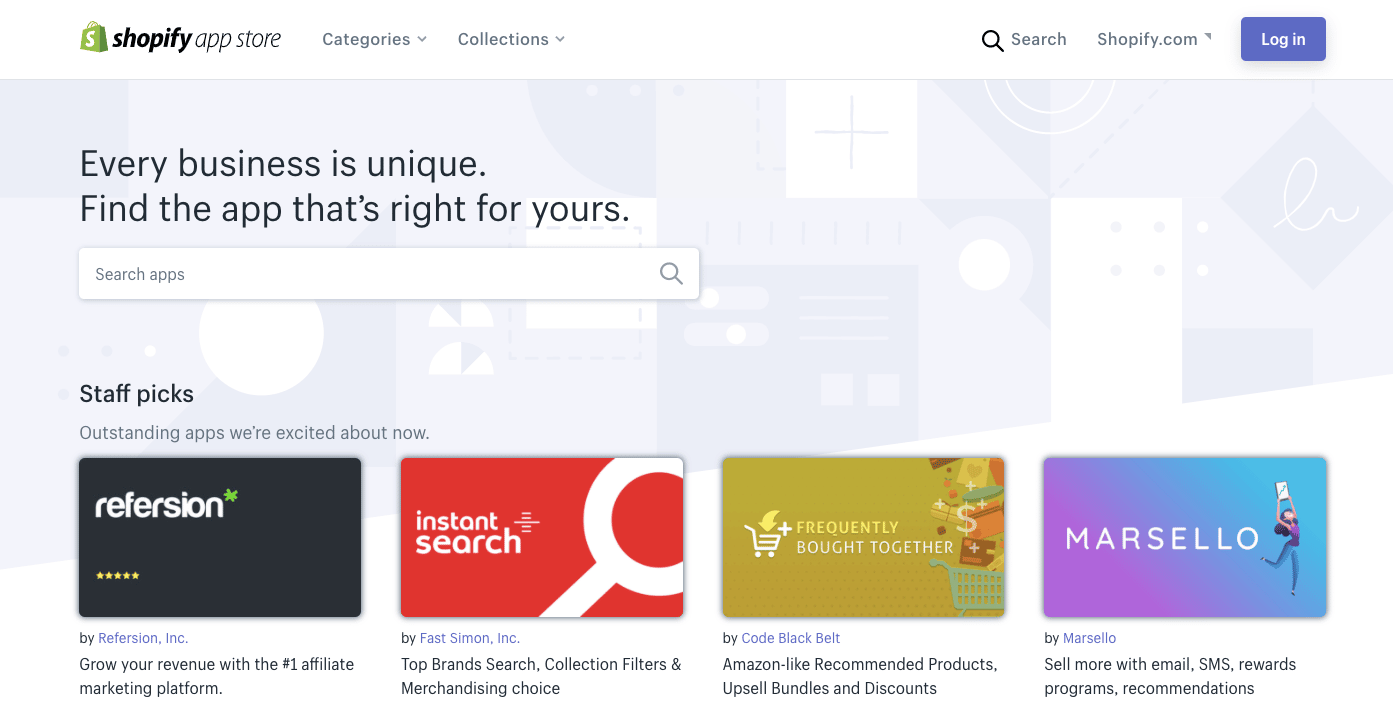
The difference is that Shopify apps tend to be more reliable since they are monitored by the platform. This doesn’t mean that you can’t find good WordPress plug-ins and extensions. You just have to be careful to check compatibility. On both platforms, ratings and reviews will help you choose from good developers who won’t leave you in the lurch.
Search Engine Optimization
Between WooCommerce and Shopify, search engine optimization (SEO) boils down to how much you know about applying SEO techniques. (You can, of course, hire SEO help, so having more options is certainly preferable.)
WooCommerce is the clear winner because it is built with code that is optimized for SEO. It is also integrated with WordPress, which has an impressive range of related SEO plug-ins. You just need to write awesome content to maximize this feature’s potential.
You can optimize with WooCommerce on a much deeper level than you can with Shopify, and with very easy-to-use plugins and extensions.
On both platforms, you can at least add the basic SEO information like page titles and headers, and image descriptions and alt text.
Alternatives to WooCommerce and Shopify
If you're still uncertain whether you should use Shopify vs WooCommerce for your online store, don't worry. There are still other platforms available that might do the trick.
Here are some of them
-
-
- Ecwid
- Sellozo
- Zyro
- Weebly
- BigCommerce
- Squarespace
-
Frequently Asked Questions
How is CMS different from a web builder?
A web builder generally offers a comprehensive package, including web hosting, domain registration, and a site editing tool. On the other hand, a content management system (CMS), assists in organizing and managing various website elements such as blog posts, images, videos, and more.
Is Shopify beginner friendly?
The good news for beginners is that anyone can learn the ins and outs of Shopify. Throughout the years, Shopify has continued to improve their system to make it more user friendly.
If users have any questions, they can immediately seek assistance to Shopify's customer support via email, chat, or by visiting Shopify's Help Center.
How much does WooCommerce cost?
To have the plugin included on WordPress, WooCommerce is 100% free. However, for services such as booking domains, SSL certification, etc. it will come at a cost.
Wrapping Up: WooCommerce vs Shopify
Figuring out which between WooCommerce and Shopify is better is not easy. They both have their strong points, and the winner really depends on what you want for your ecommerce store.
Shopify is the best choice if you need round-the-clock support and don’t want to bother with the technical side of things. It’s also a great option if you want to go live quickly and you don’t know how to build a WordPress site.
WooCommerce is the best choice for you if you love building sites (or are willing to hire a developer) and you want complete creative control over it. This is also the better option if you want to be able to expand and add more products to your store without paying a growing subscription fee.
Now that you have a better understanding of each platform, the next step is to make your decision and start building your ecommerce empire!
Do you have any experience with these platforms? Share it in the comments section below.






I’m not sure you should have that bit about hiring a developer for WooCommerce. I am FAR from a developer and I figured about both a WordPress blog and WooCommerce store. NOT DEVELOPER needed. Get frugal people, learn Woo and dump those monthly fees! I heard that on average Shopify people spend $79 after a few basic upgrades. No thank you. Free baby FREE is the way to go, Woo all the way!